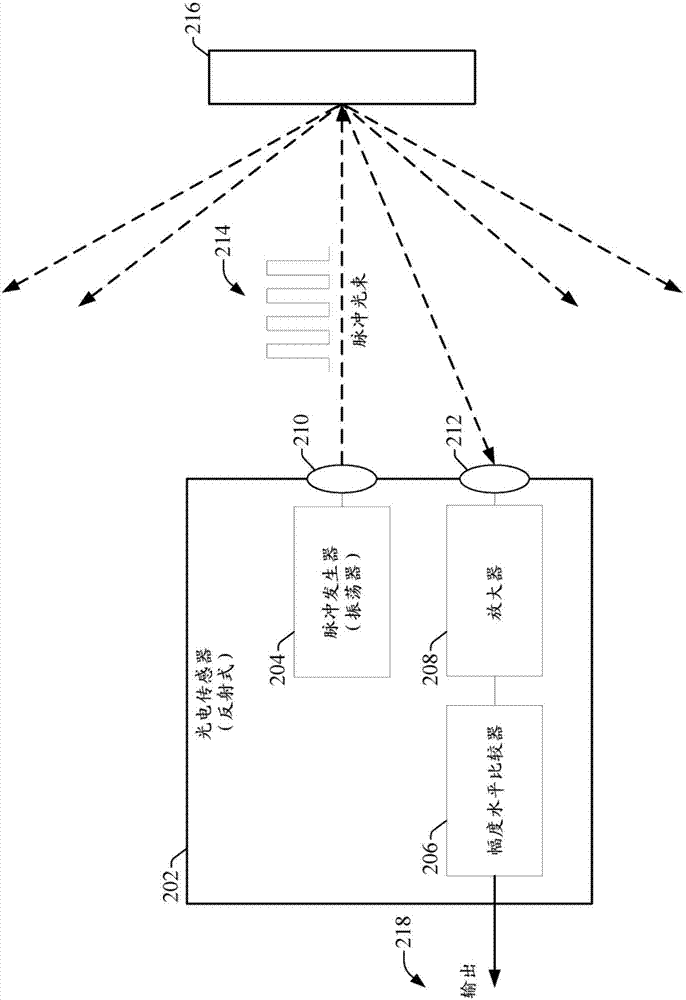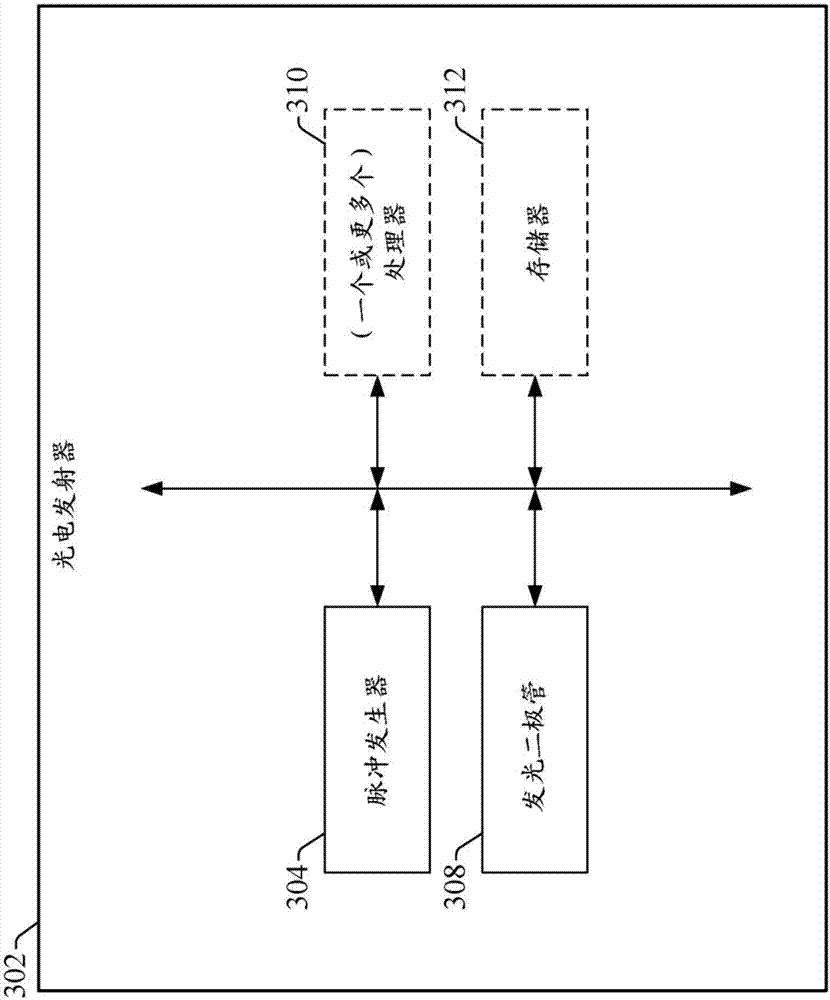System and method for pulsed based receiver photo sensor
A photoelectric sensor and pulse technology, applied in the field of photoelectric sensors, can solve the problems of difficult synchronization between the receiver and the transmitter, the inability to easily exchange synchronous data, sensitivity to repetitive noise, etc.
- Summary
- Abstract
- Description
- Claims
- Application Information
AI Technical Summary
Problems solved by technology
Method used
Image
Examples
Embodiment Construction
[0028] The present disclosure is now described with reference to the drawings, wherein like reference numerals are used to refer to like elements throughout. In the following description, for purposes of explanation, numerous specific details are set forth in order to provide a thorough understanding of the present disclosure. It is, however, evident that the present disclosure may be practiced without these specific details. In other instances, well-known structures and devices are shown in block diagram form in order to facilitate describing the present disclosure.
[0029] As used in this application, the terms "component", "system", "platform", "layer", "controller", "terminal", "station", "node", "interface" are intended to refer to A computer-related entity, or an entity relating to or being part of an operating device having one or more specific functions, where such an entity may be hardware, a combination of hardware and software, software, or an operating software....
PUM
 Login to view more
Login to view more Abstract
Description
Claims
Application Information
 Login to view more
Login to view more - R&D Engineer
- R&D Manager
- IP Professional
- Industry Leading Data Capabilities
- Powerful AI technology
- Patent DNA Extraction
Browse by: Latest US Patents, China's latest patents, Technical Efficacy Thesaurus, Application Domain, Technology Topic.
© 2024 PatSnap. All rights reserved.Legal|Privacy policy|Modern Slavery Act Transparency Statement|Sitemap



